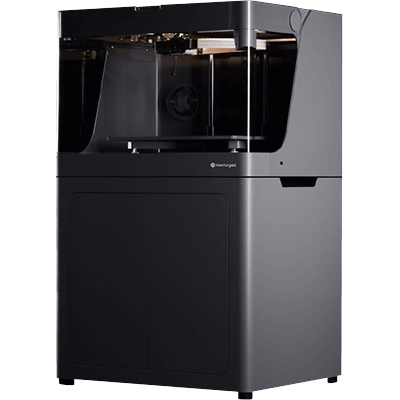What Is a Carbon 3D Printer?

A carbon 3D printer is a manufacturing machine that laminates carbon-added modeling material in a 2D cross-sectional shape to create a three-dimensional model based on 3D data. Carbon can dramatically increase strength.
The method of weaving in long carbon fibers provides strength equivalent to that of aluminum. In addition to carbon, kevlar and glass fiber can be used in some products.
The lightweight and high-strength properties are used for drone parts, radio-controlled parts, jigs, screws and propellers, etc.
Uses of Carbon 3D Printers
In addition to the advantages of being lightweight and possessing high strength, carbon 3D printers have excellent heat resistance, stability, precision, resilience, impact resistance, and thermal conductivity. Furthermore, 3D printers have the advantages of shortening the development period, instant prototyping of design concepts, and high-mix low-volume production. As a result, many companies are starting to use them for development work.
If a product using a normal 3D printer made of resin is not strong enough or does not have enough heat resistance temperature, it would be better to use a metal material. However, this would create problems in terms of equipment and cost. By adding carbon to the resin material as it is, the problem can be solved at once.
Principle of Carbon 3D Printers
The principle of 3D printers is often based on the optical modeling method, in which thin layers of modeling material are stacked and cured gradually by applying a UV laser to the liquid resin, or the FDM method, in which the material is melted by heat and stacked.
Optical modeling has the advantage of a smoother surface compared to FDM.
Other methods include material jetting and adhesive jetting, which are similar to inkjet printing. In addition, the powder sintering method, in which powder materials are sintered by irradiating them with a laser, has the advantage of being able to use metal materials as well.
One method of adding carbon to resin material is to supply the resin material and the reinforcement material separately, compound the materials inside the 3D printer, and extrude them as a composite material from a single nozzle.
Reinforcing materials other than carbon are also used. Carbon fiber, a long fiber, is lightweight and offers the highest strength and thermal conductivity. Glass fiber is cost-effective, weighs about twice as much as carbon fiber, and is about 40% stronger. In addition, kevlar has excellent flexibility and abrasion resistance, as well as high impact resistance.